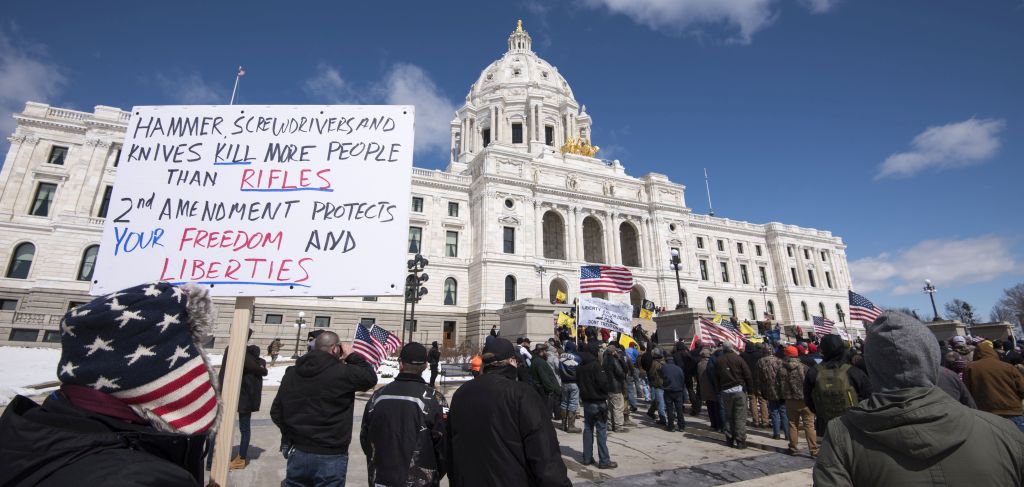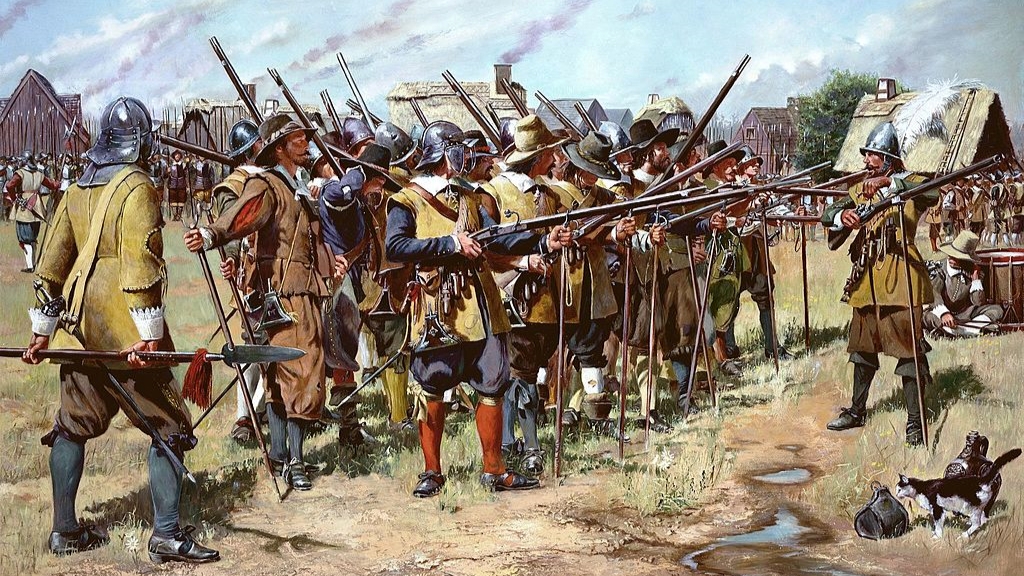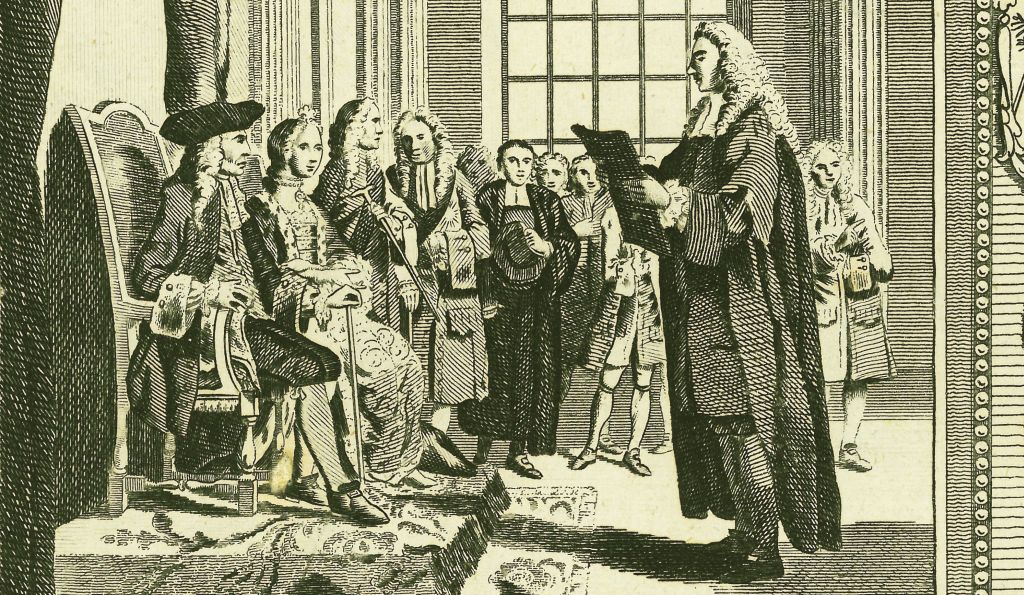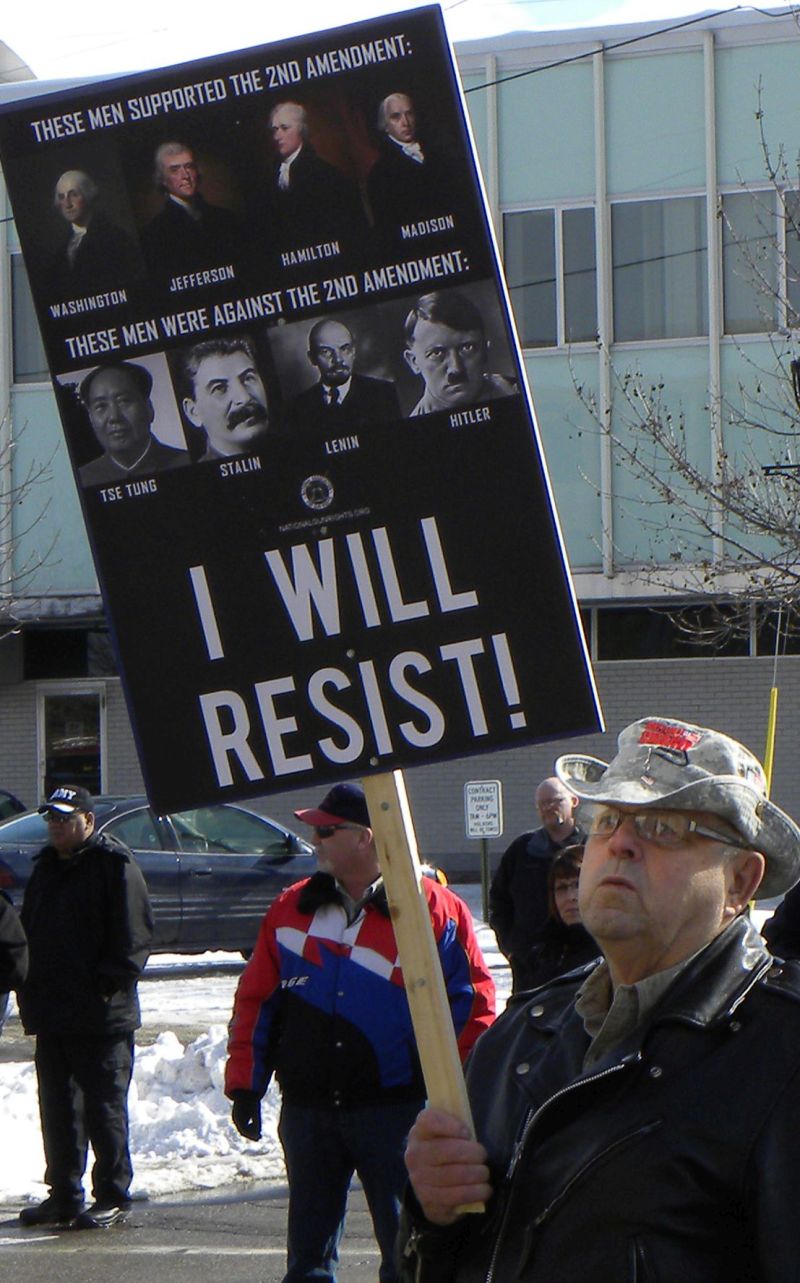After ten years of research into the history of gun rights, it’s clear that most Americans' understanding of the “right to bear arms” is not consistent with historical facts.
-
September/October 2019
Volume64Issue4
Editor's Note: We asked Patrick J. Charles, the author of numerous articles and books on gun control, legal history and the Constitution, to give us an overview of the history of gun rights. Numerous judges have cited his writings on the Second Amendment in their opinions, including the U.S. Supreme Court in the landmark decision McDonald v. City of Chicago. Charles serves as Senior Historian for the U.S. Air Force Special Operations Command and is author of the recent, seminal book Armed in America: A History of Gun Rights from Colonial Militias to Concealed Carry.

To say the history of gun rights is contentious would be an understatement. It is a history that has become guided by political ideology and cultural attitudes more than by facts.
For more than a decade, I have researched, written, debated, and discussed the history of gun rights, and its legal ramifications. I am not anti-gun, anti-Second Amendment, associated with communism, or some other negative stereotype used by gun-rights advocates to “pigeon hole” anyone who does not wholly subscribe to the tenets of gun-rights theology.
As a career historian in the U.S. Air Force, I am not unfamiliar or uncomfortable with firearms. I seek to write history in a manner that adheres to accepted historical methodology and objectivity norms – history that, to borrow from late historian Barbara W. Tuchman, stays “within the evidence.” A historian should never “invent anything, [not] even the weather.”
Simply stated, the Second Amendment was not understood in 1791, 1868, 1934, or even as late as 1968 in the way it is today. This is particularly true when one looks at the political rhetoric at different points in history. For nearly two centuries, the Second Amendment was virtually nonexistent in political discussions, nor was it even an off-the-cuff talking point in election campaigns.
Today, however, after decades of the politicizing of the Second Amendment by gun-rights advocates, the issue of gun rights is ingrained in America's political discourse, with some politicians, lawmakers, and political commentators going so far as to exalt the Second Amendment above all other constitutional protections.

For the past two decades, gun-rights advocacy organizations, most notably the National Rifle Association (NRA), have been influential in convincing federal, state, and local lawmakers (and in some cases federal and state judges), to view the Second Amendment right to “keep and bear arms” in the same way they do — as a broad right to acquire, own, shoot, and carry firearms in both private and public. This influence ushered in what may best be described as the golden era of gun rights.
Has anything changed? Read “America as a Gun Culture” by Richard Hofstadter
in the October, 1970 issue of American Heritage.
Consider that for centuries restrictions on carrying firearms in public places were common and their constitutionality was unquestioned. Today, however, the status quo is quite different. At the urging of gun-rights advocates, a number of state legislatures have removed most, if not all, legal barriers to carrying firearms in public places. The same is true of self-defense. For centuries, the prevailing rule of law was that it was unlawful to shoot and kill another person unless it was absolutely necessary and deemed reasonable to the average person. Now it is legally permissible to employ armed self-defense even against a person who is retreating.
I began my research into gun rights after the U.S. Court of Appeals 2007 decision in Parker v. District of Columbia, in which a 2–1 majority held that the history surrounding the Second Amendment's ratification means that the right to “keep and bear arms” was understood by the Founding Fathers to protect an individual right to own common-use weapons for use outside of the militia.
To test the accuracy of the court's historical pronouncements, I read every primary source and secondary source on the ratification of the Second Amendment that I could find. If, in fact, the court was correct that the Founding Fathers understood the term “bear arms” to mean carry arms, there should be plenty of examples in late-eighteenth-century literature. In the end, however, my historical examination turned up nothing of substance to support the Parker court's central historical pronouncement.
In almost every instance, the terms “bear arms” was used in a distinctive military context. While there were indeed a few outliers that used the term “bear arms” broadly, there was nothing in them to firmly suggest that “bear arms” was referring to the general carrying of arms for non-military-related purposes.
Given that the Constitution and Bill of Rights were legal documents – drafted, debated, and amended by some of the greatest legal minds of the late-eighteenth-century – then surely the language used to comprise the Second Amendment would be found in the very laws governing eighteenth-century Americans. For three months, I immersed myself in eighteenth-century law books.
Upon finishing my research, I came to two historical conclusions. First, all of the language that comprised the Second Amendment — “well-regulated militia,” “necessary to the security of a free state,” “bear arms,” and “keep arms” — appeared regularly in eighteenth-century laws pertaining to militias. Second, in all the other eighteenth-century laws, including the laws pertaining to crime, self-defense, weapons, and hunting, none of the language that comprised the Second Amendment was present — not even different variants of the term “bear arms”— i.e. “to bear arms”, “bearing arms,” etc.
Even more telling was the fact that not one eighteenth-century legal commentator or one eighteenth-century legal case used the term “bear arms” or any variant of the terms to describe the act of carrying arms or using arms in the act of self-defense.
These findings led me to conclude that the Second Amendment was neither legally intended nor legally understood by the Founding Fathers as protecting a right to armed individual self-defense. Rather, the Second Amendment was intimately tied to service in a well-regulated militia, and the political history surrounding the militia, particularly from the late eighteenth century to the early nineteenth century, further supported this conclusion.
See also “What Does the Second Amendment Really Mean?” by Joseph J. Ellis
in this issue of American Heritage
Then in District of Columbia v. Heller, the Supreme Court also ruled in favor of the armed individual self-defense interpretation, albeit by a slim 5–4 majority, in a decision that was centered on history in law. What immediately stood out from the decision was the majority's linguistic analysis. With only a few working examples, the majority agreed that the minority usage of the term “bear arms” was the majority usage, and the majority usage was somehow the minority usage.
One thing that stood out was the manner in which the majority of the Court explained away the Second Amendment's prefatory language, as if the Founding Fathers had included it as merely a visual aesthetic rather than central to the amendment’s meaning.
Another historical pronouncement made by the Heller majority was also curious — that the English antecedents of the Second Amendment, Article VII of the 1689 English Declaration of Rights, was understood as conferring a right to armed individual self-defense. I was already somewhat familiar with the history of the era, but in striving for historical objectivity and accuracy, I reached out to historians who specialized in Stuart England and seventeenth-century English intellectual thought.
With their guidance, I read every source that was available pertaining to the English Declaration of Rights and compared my findings with what the Heller majority pronounced.
I found that the actual history of the English Declaration of Rights and the history embraced by the Heller majority were far removed from one another. They were not even close, and the reason for the historical divide was the works of two influential scholars, Joyce Lee Malcolm and Stephen P. Halbrook, both of whom maintain ties to the National Rifle Association (NRA).
Page by page, line by line, footnote by footnote, I delved into the relevant historical material written by Malcolm and Halbrook, and in the process found a number of errors. By and large, Malcolm's and Halbrook's errors were due to their failure to fully adhere to accepted historical methodologies. Historical texts were not fully contextualized, broad historical claims were made with little supporting evidence, historical research and analysis were done for the sake of conducting a modern legal thought experiment, not uncovering the past nor accepting the past on its own terms, and so forth.

At times, Malcolm and Halbrook made historical claims without any supporting evidence, such as Malcolm's claim that James II sought to use the 1671 Game Act to disarm all of England. Or Halbrook's claim that the Second Amendment was drafted in response to the disarmament of Americans that took place during the Revolutionary War.
The alarming gravity of these historical errors were the impetus for my next two publications, both on the history of the Second Amendment. Some of historical research and analysis ended up being the basis for an amicus brief in McDonald v. City of Chicago, in which the Supreme Court affirmed most of the historical pronouncements made by the Heller majority and applied them to state court decisions by incorporation. Justice Stephen Breyer adopted my legal argument in his dissent and wrote a scathing dissent on the use and abuse of history.
In the months immediately following McDonald, I witnessed lawyer after lawyer, and legal scholar after legal scholar (most of whom were paid for or employed by gun-rights advocacy organizations), continue to distort the history of the Second Amendment. My intellectual idealism eventually shifted to intellectual realism. The history of gun rights was not based on adhering to accepted historical principles, such as historical objectivity, the search for the historical truth, or a scholarly exchange of ideas. Rather, the history of gun rights was principled on legal advocacy, political activism, and in the process expanding the meaning and scope of the Second Amendment as broadly as possible.
For a brief time, given the dishonest nature of the subject, I considered foregoing any additional research or writing on the history of gun rights. But if I turned my back on it, I would be turning my back on the principle reason why I wanted to be a historian in the first place — protecting history and facts from myth and distortion.
The history of gun rights speaks differently to different people – there is not one historical narrative of gun rights, but many. But it’s a fact that the Founding Fathers’ conception of the Second Amendment had little to do with a right to own, maintain, and use firearms for hunting, shooting, and self-defense. Rather, the heart of the Second Amendment related to a well-regulated militia, which had political, societal, constitutional, and ideological significance for the Founding Fathers.
Indeed, in order to be considered a well-regulated militia in the late eighteenth century required that “the people,” as militiamen, be armed with rifles, muskets, pistols, cutlasses, and the like. However, as every political and military commentator up through the late eighteenth century attested, arms were not the central component of a well-regulated militia. Arms were merely a tool to achieve the constitutional end of republican liberty — liberty that the Founding Fathers thought would be undermined should the public's trust in a well-regulated militia ever cease to exist.
In less than half a century, the fears of some of the Founding Fathers had been realized. Due both to political inaction and public disfavor with militia service, the civic republicanism model of the Second Amendment eventually died. In its place arose the antithesis — the armed citizenry model. Accompanying this conceptual change in American thinking was the belief in a new Second Amendment right to armed individual self-defense.
This new right, although legally actionable, was severely limited in constitutional scope. Certainly, in the Antebellum Era, some Southern state courts recognized a more robust right to armed self-defense both in private and public, but it was a right that only applied to a small segment of the country. For most Americans, the right to own weapons for self-defense and other purposes, was, like other rights, limited by governmental police power, and therefore was subject to reasonable regulation, including limiting what types of weapons could be owned, as well as time, place, and manner restrictions.
After the Civil War, the majority view of the Second Amendment completely consumed the minority view, and a national consensus developed. The national consensus was that state and local governments maintained broad police powers to regulate dangerous weapons in the interest of public safety—that is, so long as they did not utterly destroy the armed citizenry model of the Second Amendment or fail to allow for individuals to exercise their right to armed self-defense in extreme cases.
In the early part of the twentieth century, although many Americans had come to believe that the Second Amendment protected a right to own firearms for lawful and legitimate purposes outside of service in the militia, the Supreme Court of the United States had never defined the Second Amendment in such broad terms. In fact, it is fair to say that Supreme Court jurisprudence was ambiguous as to what individual rights, if any, the Second Amendment afforded.
This ultimately placed the burden on the lower federal courts to settle the matter. One after the other, every twentieth-century appellate court to examine the Second Amendment held that the right to keep and bear arms was tied to the militia, in some form or another. Undeterred by the federal courts was a group of staunch believers in a right to own and use firearms for legitimate and lawful purposes.
Provoked to action by the unceasing growth of firearms restrictions, these believers assembled the first gun-rights advocacy groups. During these earlier years, the primary agenda of gun-rights advocacy was to promote model firearms legislation.

However, as gun-rights advocates achieved one political victory after another and the gun-rights community continued to grow, their resolve for larger conceptual change reached new heights. To gun-rights advocates, in order to achieve this conceptual change the end almost always justified the means. Whatever was necessary to rouse the gun-rights community to action, influence lawmakers, or garner public opinion was morally justifiable.
This often meant vilifying the intellectual opposition, relying on sensationalism, and fabricating political motives. At the same time, firearms regulations were whimsically assailed as being ineffective, promoting crime, and nothing more than a slippery slope toward complete disarmament.
For most of the twentieth century, the political agenda advanced by gun-rights advocates — although undoubtedly effective at rousing the gun-rights community to stall or defeat firearms legislation — did little to sway the general public, who overwhelmingly supported firearms controls. But, through persistence, gun-rights advocates eventually succeeded in changing the general public's perception.
From the early to mid-twentieth century, gun-rights advocates pushed their agenda with little, if any, substantiated evidence. Then in 1977 a grassroots movement in the NRA ousted its Executive VP, Gen. Maxwell E. Rich, a part of the "Old Guard" who planned to reduce the organization's political involvement and return it to what he saw as its heritage of shooting sports and marksmanship. Following that "Cincinnati Revolt," gun-rights advocacy began recruiting, fostering, and promoting academic literature that coincided with longstanding gun-rights theology. Almost everything gun-rights advocates had claimed for decades was now being packaged and sold as academically true.
The historical vilification of firearms controls is merely part of a larger transformation that has taken place in modern American politics — one that sees ideas and beliefs in simple right and wrong terms. From the perspective of gun-rights advocates, those who stand in support of gun rights are cast as the good guys. Conversely, those who stand in support and advance of gun control are cast as the bad guys.
This transformation is one of many reasons the evolution of gun rights has proven to be so problematic for American society.

